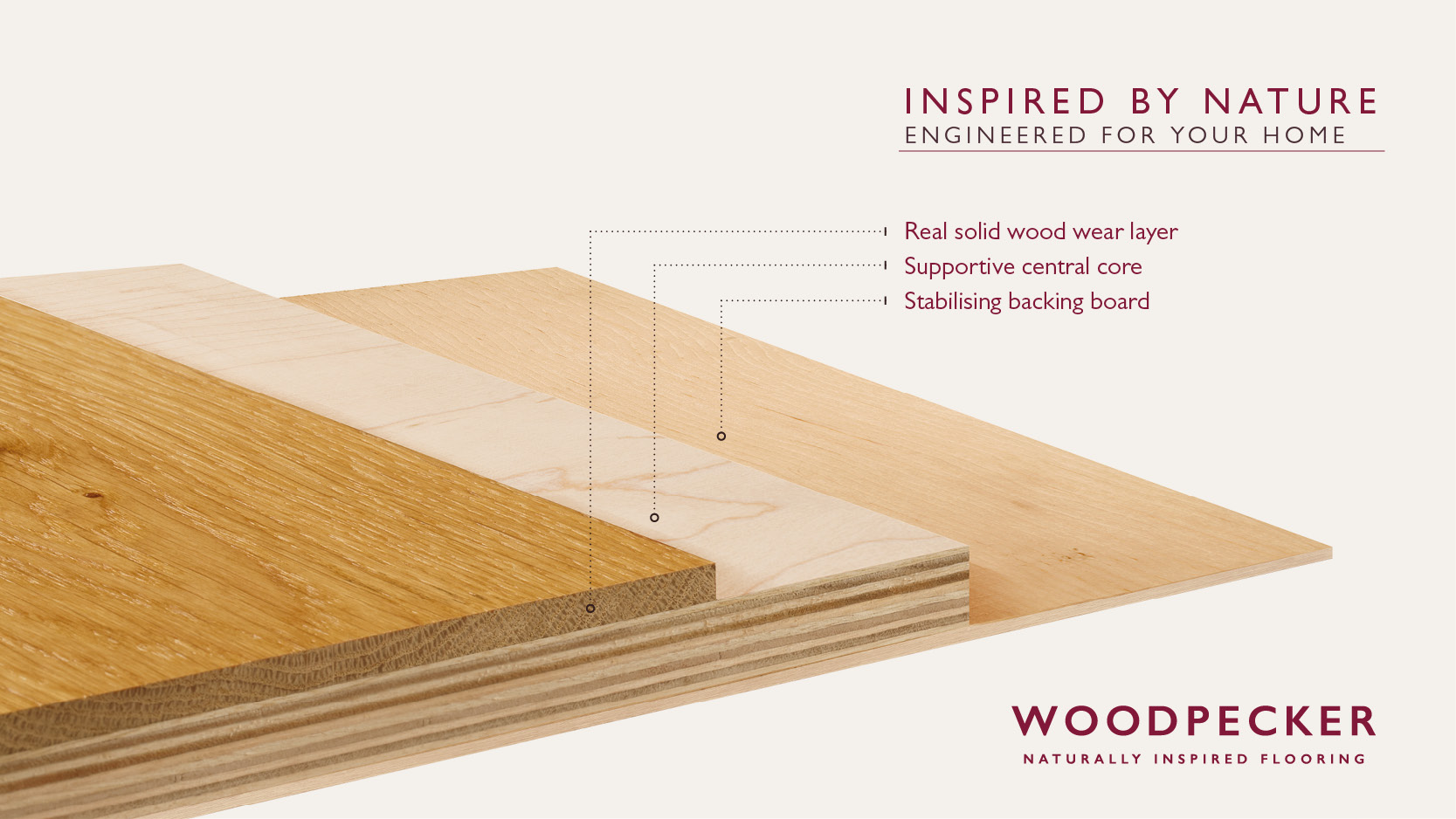Engineered Wood Flooring: The Fantastic Benefits

When the time comes to update a floor, most people are drawn to solid wood. It’s seen as classy, stylish, and 100 per cent natural. So when we say that ‘engineered wood flooring’ has a whole array of benefits you might not have considered, an eyebrow or two is often raised in suspicion.
The fact is, engineered wood flooring is the most common type of wood flooring used globally, and there are lots of good reasons for that.
How it’s made
The secret to the success of engineered wood flooring lies in its construction. Essentially, it has three layers. On the surface is a layer of natural solid wood giving your floor all the beauty of a solid wood floor. The supportive core is a combination of between three and a dozen bonded sheets of high density fibreboard (HDF), softwood or plywood giving engineered wood a more stable construction, and the base forms a solid backboard to provide a more secure solid wood alternative.
Engineered wood flooring is more stable
Thanks to its multi-layered core, engineered wood flooring is more resilient when the humidity changes. Wood is a hygroscopic substance, meaning that it naturally absorbs moisture, which causes it to swell. Equally, when humidity drops, the moisture evaporates and the wood shrinks. The construction of engineered boards limits this movement as conditions change ensuring greater stability throughout the floor.
It’s versatile too
Underfloor heating is becoming more and more common. While the heat generated tends to dry out solid wood quite easily, laying engineered boards over underfloor heating isn’t a problem. In renovated kitchens and new builds, where underfloor heating is becoming the norm, you’ll find engineered wooden flooring is a very popular choice. Likewise, it’s found in basements and conservatories – where moisture levels can be high – because it it’s less likely to warp than solid wood.
Easy to fit
Thanks to its wood core, engineered wood flooring isn’t limited to the traditional tongue and groove joint found in solid wood floors. Glueless loc and clic solutions mean that the boards can be floated over an underlay without the need for nails or adhesive. That’s a real bonus for anyone fitting a floor.
Long-lasting
Never underestimate the life of the solid wood on an engineered wood floor. These boards can be sanded and refinished just like solid wood and wear only 1mm per 100 years.
What’s so great about engineered wood flooring? Well, it has all the natural beauty of a solid wood floor, without many of the drawbacks, and is stable, durable and easy to work with. Discover the variety of species, stains and finishes in our engineered wood flooring section.


